 In the Batman comics, there might be a symbolic connection between Bruce Wayne’s tragic childhood and the personalities of the main enemies of Batman. There are childlike personalities to the original incarnations of The Joker, The Riddler, and The Penguin. The only partial exception is Catwoman. Even though there have been many other villains that Batman fought in later issues of the comics that do not fit in this category, there have always been certain villains that he has fought the most.
In the Batman comics, there might be a symbolic connection between Bruce Wayne’s tragic childhood and the personalities of the main enemies of Batman. There are childlike personalities to the original incarnations of The Joker, The Riddler, and The Penguin. The only partial exception is Catwoman. Even though there have been many other villains that Batman fought in later issues of the comics that do not fit in this category, there have always been certain villains that he has fought the most.
One villain that is the hardest for Batman to defeat is always The Joker. The Joker is the the ultimate in childish, but dangerous, behavior. The Joker tells immature and tasteless jokes. The Joker also engages in dangerous practical jokes. Batman’s constant battle with The Joker is Batman’s symbolic battle to get past the grief over his parents being killed in front of a theater. As a result of Bruce Wayne’s parents being killed when he was a child, Bruce Wayne has never fully grown up. Bruce keeps having flashbacks about his parents’ murders again and again. Bruce becomes Batman to fight the Joker, who is a symbol of the tragic child that Bruce still is. Also, like the theater Bruce Wayne’s parent’s were murdered in front of, The Joker is very theatrical.
The Riddler is another villain that represents Batman’s fight against the mystery of his childhood tragedy. Like the Joker, The Riddler is also childish and dangerous in his behavior. Once again, we have a villain who is a symbolic mirror for Bruce Wayne/Batman’s childlike tragedy. When Bruce Wayne becomes Batman, he doesn’t know if he is really Batman, Bruce Wayne, or both. The Riddler makes Batman solve riddles that must be solved for safety reasons. If Batman does not solve The Riddler’s puzzles, death can come to Batman or other people. As The Riddler sends out out childish riddles for Batman to solve, Batman is also solving the riddle of his own identity.
The Penguin is another childlike villain, who plays around with umbrellas. The Penguin’s original incarnation has him as a mobster who owns a nightclub as a front. The Penguin loves birds and has a funny portly penguin look to him. He also has many trick umbrellas that gas and shoot people. The Penguin is like The Joker, but with umbrellas. He also acts like a penguin, making him another whimsical but deadly enemy.
The interesting exception is Catwoman. Even though she is a bit silly dressing up in a cat outfit, Catwoman still refers to herself as a woman and not a girl. Catwoman is also not always a villain. Sometimes, she has a loving relationship with Batman. Because of this, Batman finds a little more of an adulthood with the Catwoman.
One would think that by now The Joker would have ran out of tricks. However, there might be something deeper behind Batman’s constant trouble with the Joker, even if the writers of the comics don’t know it on a conscious level.
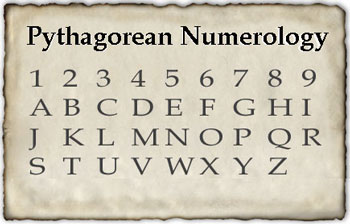 The reason why comic book character Peter Parker acts the way he acts is in his name. After studying Numerology, I found that there is Numerology involved in the titles and characters in many comic books. Numerology is a mathematical science that is related to a person’s abilities, destiny, and challenges. There are many different ways to calculate a person’s Numerology. However, in the case of comic book characters names, I will calculate how to find a person’s Numerology by words or names.
The reason why comic book character Peter Parker acts the way he acts is in his name. After studying Numerology, I found that there is Numerology involved in the titles and characters in many comic books. Numerology is a mathematical science that is related to a person’s abilities, destiny, and challenges. There are many different ways to calculate a person’s Numerology. However, in the case of comic book characters names, I will calculate how to find a person’s Numerology by words or names.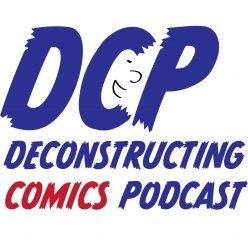
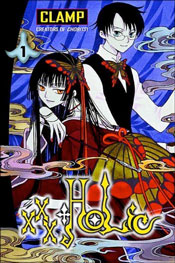 Tim Across America, pt 4! Kimihiro Watanuki, an orphaned high school student whose name represents his birthday, one day finds himself entering a mysterious house. Inside he finds a couple of manic kids and a flirtatious witch named Yuko who grants wishes — for a price.
Tim Across America, pt 4! Kimihiro Watanuki, an orphaned high school student whose name represents his birthday, one day finds himself entering a mysterious house. Inside he finds a couple of manic kids and a flirtatious witch named Yuko who grants wishes — for a price.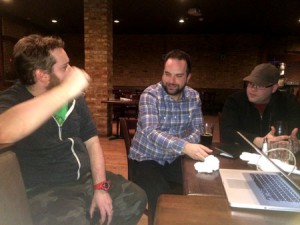
 In the Batman comics, there might be a symbolic connection between Bruce Wayne’s tragic childhood and the personalities of the main enemies of Batman. There are childlike personalities to the original incarnations of The Joker, The Riddler, and The Penguin. The only partial exception is Catwoman. Even though there have been many other villains that Batman fought in later issues of the comics that do not fit in this category, there have always been certain villains that he has fought the most.
In the Batman comics, there might be a symbolic connection between Bruce Wayne’s tragic childhood and the personalities of the main enemies of Batman. There are childlike personalities to the original incarnations of The Joker, The Riddler, and The Penguin. The only partial exception is Catwoman. Even though there have been many other villains that Batman fought in later issues of the comics that do not fit in this category, there have always been certain villains that he has fought the most. Tim Across America pt 2! In Nashville, Tim visits with his brother Paul about his progress on his book about Frank Miller’s Daredevil run. What was Daredevil like before Miller got ahold of the book? What was Miller’s inspiration for making it more of a gritty crime book? How did he end up contradicting his own original take on the character?
Tim Across America pt 2! In Nashville, Tim visits with his brother Paul about his progress on his book about Frank Miller’s Daredevil run. What was Daredevil like before Miller got ahold of the book? What was Miller’s inspiration for making it more of a gritty crime book? How did he end up contradicting his own original take on the character?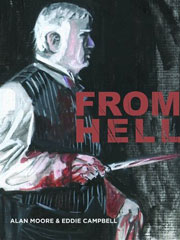 In the early ’90s, Alan Moore and Eddie Campbell’s From Hell, based on the true story of Jack the Ripper, was published in issues, and collected in 1999. Kumar and Dana find that, upon re-reading (or re-re-re-reading), new questions still arise. What’s the story about? Why does the killer sometimes come off as a wise prophet? Many scenes are simply puzzling and need sufficient time to unpack. And then there’s the Star Wars reference…
In the early ’90s, Alan Moore and Eddie Campbell’s From Hell, based on the true story of Jack the Ripper, was published in issues, and collected in 1999. Kumar and Dana find that, upon re-reading (or re-re-re-reading), new questions still arise. What’s the story about? Why does the killer sometimes come off as a wise prophet? Many scenes are simply puzzling and need sufficient time to unpack. And then there’s the Star Wars reference…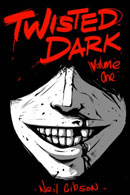 We all know the appeal of stories with twist endings. But what exactly constitutes a twist ending? And what other factors do you need to make it work? Brandon joins Tim and Mulele to discuss Neil Gibson’s
We all know the appeal of stories with twist endings. But what exactly constitutes a twist ending? And what other factors do you need to make it work? Brandon joins Tim and Mulele to discuss Neil Gibson’s 
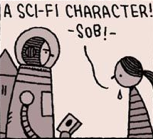 Tim and Mulele discuss more comics Dale sent us from L.A., including “
Tim and Mulele discuss more comics Dale sent us from L.A., including “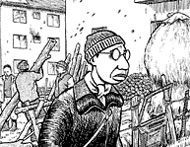 Joe Sacco is surely THE trailblazer in the area of using comics as a medium for journalism; his work reads like a documentary film, or a remote report on the evening news. At his best, such as in Safe Area Gorazde, he not only gets you much more emotionally involved than the evening news ever could, he takes advantage of the medium to communicate in ways that video can’t. At the same time, he pulls back the curtain on how the presence of a journalist affects the actions of those around him.
Joe Sacco is surely THE trailblazer in the area of using comics as a medium for journalism; his work reads like a documentary film, or a remote report on the evening news. At his best, such as in Safe Area Gorazde, he not only gets you much more emotionally involved than the evening news ever could, he takes advantage of the medium to communicate in ways that video can’t. At the same time, he pulls back the curtain on how the presence of a journalist affects the actions of those around him.